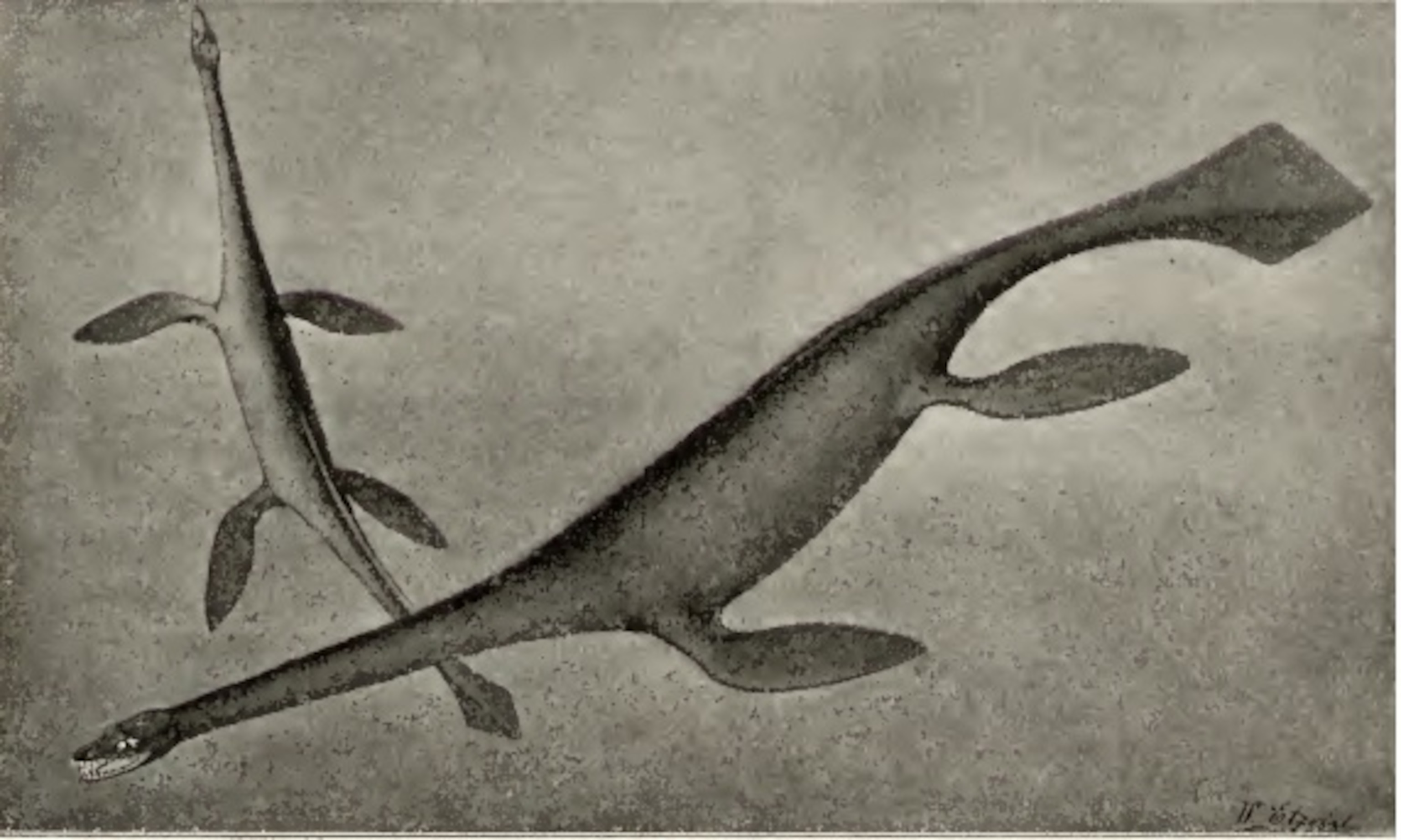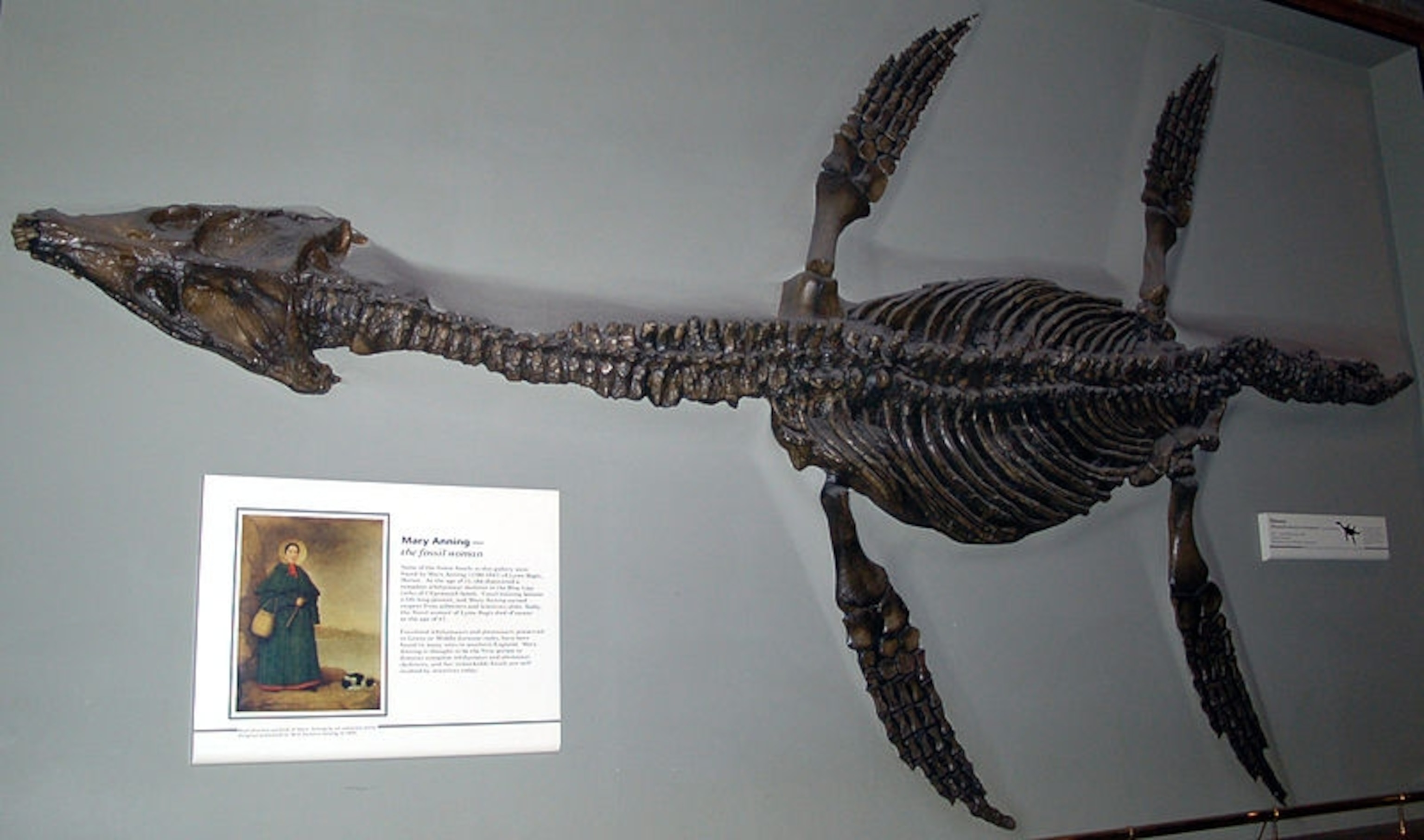Bones don’t lie. But they don’t tell the whole truth. Certainly not for prehistoric creatures. The bones paleontologists are constantly coaxing from stone and scrutinizing in museum collections are often the only clues to animals that have long since lost their flesh. Putting that flesh back onto the remaining osteological framework relies on the scars, ridges, depressions, and other clues that testify to the intimate relationship between soft tissues and skeletons.
Not all clues are equally easy to read. In the 19th century, when paleontology was still an infant science, artists and researchers often envisioned the impressively-ornamented Irish Elk as having a relatively flat back with a neck held up at a right angle to the rest of the body. It wasn’t until much later that the discovery of prehistoric cave paintings showed naturalists what they had overlooked. Those spines were anchor points for ligaments and muscles that connected to the back of the herbivore’s head. The connective tissue and bone created a prominent hump, and, as paleontologist Stephan Jay Gould pointed out in an essay on the ungulate, the enormous deer didn’t strike a pose with such an erect neck as the classic skeletal illustrations depicted. If the cave paintings are to be believed, the hump was present in both sexes and prominently colored a reddish brown. Early paleontologists didn’t have the advantage of drawing Irish Elk from life, of course, but the conservative tradition of illustrating prehistoric creatures with their skin spun tightly over skeletons had obscured a striking feature of the living animal.
("Sea Monster" Fetus Found—Proof Plesiosaurs Had Live Young?)
Cave paintings will only get us so far. Back to the last Ice Age, more or less. Given that our species and the last of the non-avian dinosaurs were separated by 66 million years, we can be certain that there’s no hope of finding Tyrannosaurus painted onto a cave wall somewhere, no matter with religious fundamentalists say. Plesiosaurs are in the same predicament. These quad-paddled marine reptiles thrived in the seas while dinosaurs dominated the land. That’s why they often show up in packs of plastic prehistoric animals and, to the ongoing frustration of vertebrate paleontologists, are often confused for dinosaurs. And in those representations, plesiosaurs often have a uniform look. Since the early 19th century they’ve been regarded as being like “a snake drawn through the body of a turtle”, with their tails little more than a cylindrical appendage that apparently had trailed behind the animals like pieces of rigid spaghetti. This may not have been so. Some plesiosaurs may have had tail fins.
From the time that Victorian naturalist William Conybeare named Plesiosaurus on the basis of a nearly-complete skeleton in 1824, the way that these reptiles propelled themselves through the seas has been clear. Plesiosaurs of all types – from the small-headed and long-necked to the large-headed and short-necked – flapped and flew through the water with their four large flippers. This mode of swimming was starkly different from the side-to-side, fish-like manner of most other marine reptile lineages. Plesiosaurs must have been beautiful, graceful swimmers. And with such prominent paddles, there was no important role for their apparently cylindrical tails.
But in 1895 the German paleontologist Wilhelm Dames reported something strange. Around the body of a plesiosaur he named Seeleyosaurus guilelmiimperatoris, Dames reported two curious stains that seemed to be remnants of the plesiosaur’s soft tissue. One, on the trailing edge of a paddle, appeared to be part of the plesiosaur’s right front flipper. The other was a roughly triangular smudge left on the stone around the tail.
Dames took the curious fossils as faithful remains of the plesiosaur’s soft tissues. Along with the skeleton, he published a life restoration of Seeleyosaurus with a diamond-shaped tail and a mischievous grin. But attempts by paleontologists to see what Dames himself observed have been stalled by a simple fact of historical preservation. For some reason, seemingly now forgotten, the possible remnants of soft tissue were painted over. To remove the obscuring layers may risk removing the tantalizing evidence beneath.

No other plesiosaur with such soft tissue clues has been described. While some artists and paleontologists took Dames’ Seeleyosaurus as a cue to speculate on tail fins for other plesiosaurs, the tube-tailed model has held sway. But, in lieu of exceptional preservation, osteological clues may hint at what was lost on Mesozoic seabottoms.
At the 2010 Society of Vertebrate Paleontology meeting in Pittsburgh, Pennsylvania, Benjamin Wilhelm made the case for bony clues of plesiosaur tail fins. Over and over again, marine reptiles with upright tail fins – such as ichthyosaurs, mosasaurs, and seagoing crocodiles – evolved a similar set of osteological features to support soft tissue fins. Even better, remarkable sites have sometimes preserved outlines of these tail fins among other marine reptiles. Drawing from this body of evidence, Wilhelm identified skeletal features that are consistent with a tail fin in the skeletons of the plesiosaurs Cryptoclidus and Muraenosaurus. Vertebrae that are compressed from side-to-side near the end of the tail, as well as vertebral spines that change direction to create a kind of rounded hump, are among the features some plesiosaurs share with other marine reptiles with tail fins.

Adam Smith has added another possible candidate to the list of plesiosaurs with tail fins. In a newly-published Paludicola paper Smith argues that Rhomaleosaurus – a plesiosaur with a relatively large skull and a medium-length neck – had two features consistent with a tail fin. In addition to a “node” of two shortened vertebrae where the fin supposedly started, Rhomaleosaurus had a set of compressed vertebrae at the tail tip. The reconstruction included in the paper shows a plesiosaur with a middling, rounded tail fin, but a tail fin all the same.
The trouble with such plesiosaurs is that their tails were not adapted for propulsion to the same degree as the ichthyosaurs, mosasaurs, and marine crocodiles known to have tail fins. Were the vertebrae of Rhomaleosaurus really compressed to support a fin, or do they just look short and boxy because they were near the end of the tail? For Cryptoclidus and Muraenosaurus, too, the bony anatomy wasn’t so prominently suited for tail fin support as other marine reptiles. And with Dames’ Seeleyosaurus surrounded by paint, there’s currently no way to know whether or not his plesiosaur truly had a tail fin, nor why such an appendage evolved.
Just like the old images of Irish Elk with necks held high, though, visions of plesiosaurs with tail fins offer a hypothesis. The same is true for all restorations and reconstructions of prehistoric life. Even the most complete specimen is missing clues, be they bones or the behaviors the animal only performed in life. Further finds will test what has been deduced and supposed so far. For plesiosaurs, the resolution rests with the ongoing search for their kind in rocks lifted beyond the reach of the sea. Maybe, if geological luck is with us, there are plesiosaurs entombed with tatters of soft tissues intricate enough to test visions drawn from their bones.
References:
Dames, W. 1895. Die plesiosaurier der Süddeutschen Liasformation. Abhandlungen der Königlich Preussischen Akademie der Wissenschaften zu Berlin 1895 :1–81.
Smith, A. 2013. Morphology of the caudal vertebrae in Rhomaleosaurus zetlandicus and a review of the evidence for a tail fin in PlesiosauriaMorphology of the caudal vertebrae in Rhomaleosaurus zetlandicus and a review of the evidence for a tail fin in PlesiosauriaMorphology of the caudal vertebrae in Rhomaleosaurus zetlandicus and a review of the evidence for a tail fin in Plesiosauria. Paludicola. 9, 3: 144-158
Wilhelm, B. 2010. Novel anatomy of cryptoclidid plesiosaurs with comments on axial locomotion. M.S. thesis, Marshall University, Huntington, West Virginia, 76 pp.

